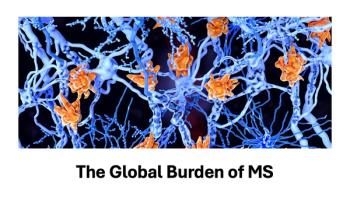
AMA unveils tool to address ‘ever-widening gap’ in physician education
As the industry moves toward value-based care, medical education must keep pace.
As the industry moves toward value-based care, medical education must keep pace. On November 1, The American Medical Association (AMA) unveiled a new tool to help up-and-coming physicians thrive in the changing healthcare environment.
That tool, which is part of the AMA’s accelerating change in medical education initiative and its effort to “create the medical school of the future,” is a textbook that focuses on health systems science, said James Madara, MD, CEO of the AMA.
For all the advancements in medicine over the years, physician training and education hasn’t changed very much, Madara said. The result is an “ever-widening gap” between physician training and the modern realities of the medical environment.
Madara said the medical school of the future must:
- Incorporate tools that respond to the need of chronic disease through team-based care;
- Focus on greater continuity of care;
- Include more outpatient exposure;
- Acquire and educate students on new technologies;
- Prepare doctors to take on leadership roles; and
- Explore “the most innovative ways to care for patients, populations, and communities.”
Defining health systems science
The concept of health systems science in medical education, evolved from the work done by the 32 medical schools that make up the
“Our medical schools are very good at preparing students for basic and clinical science,” such as making diagnoses and providing treatment, but they have been missing education on how healthcare is delivered in a complex system, said Skochelak.
The health systems science textbook focuses on helping physicians hone new skills in various areas, including:
- Value in healthcare;
- Patient safety and quality improvement;
- Teamwork and team science;
- Leadership;
- Clinical informatics;
- Population health;
- The social determinants of health;
- Healthcare economics; and
- Healthcare finance.
Real-world applications
Already, some medical schools participating in the consortium are incorporating elements of the textbook into medical education. They include Penn State College of Medicine and Warren Alpert Medical School of Brown University. The textbook will be available to all medical schools in mid-December.
Penn State College of Medicine
Jed Gonzalo, MD, associate dean for health systems education, Penn State College of Medicine, said that in the fall of 2014, the college began incorporating a systems navigation curriculum for first- and second-year medical students.
The curriculum focuses on health systems science concepts such population health, social determinants of health, and leadership.
“These were concepts that were really not taught in medical school, particularly not here at Penn State, prior to our launch,” said Gonzalo.
The school is extending the education concepts third- and fourth-year medical students, graduate medical education, residency programs, and faculty, he said.
Warren Alpert Medical School of Brown University
Jeffrey Borkan, MD, PHD, assistant dean for primary care population medicine program planning, Warren Alpert Medical School of Brown University, said health systems science is “critically important” to students, as they have been graduating without some of the practical skills necessary to navigate the system and practice effectively.
In 2015, Warren Alpert Medical School implemented a primary-care population medical program that incorporates the health systems science concepts. This is a four-year dual-medical degree and masters degree in population medicine.
The school will put the new textbook into immediate use for all students, not just those in the primary care program, he added.
“We’re educating the workforce of the future, we want to make a difference, we want to meet the Quadruple Aim, and … this textbook is a critical step toward that,” said Borkan.
Newsletter
Get the latest industry news, event updates, and more from Managed healthcare Executive.






















































